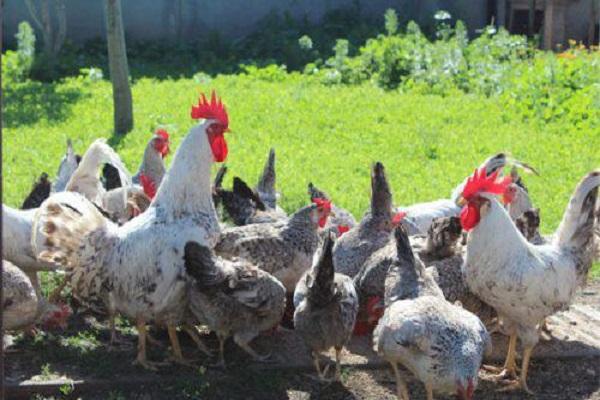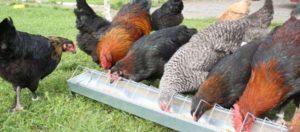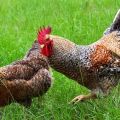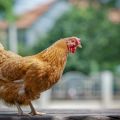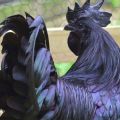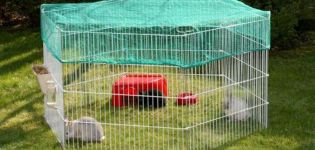Description and maintenance of chickens of the Borkovskaya barvy breed, care and breeding
Chickens of the Borkovskaya Barvy breed appeared in poultry houses not so long ago, but they have already gained popularity due to their calm nature, delicious eggs and dietary tender meat. Interest in this breed is not accidental. The variety has many advantages, keeping hens is economically beneficial, in addition, the variegated hens are simply beautiful.
Historical information about the breed
Borkovskaya barvy breed of chickens was bred by Ukrainian scientists and registered recently, in 2005. The name comes from the name of the village of Borki, where the breeders worked, and the Ukrainian word "barva", which means "paint", as a reference to the variegated color of birds. The main task was to create a variety with good adaptation characteristics to climate change. The most highly productive breed of domestic hens of the egg direction - Leghorn, was taken as a basis, so their egg production became an additional advantage of the bred birds.
Features and characteristics of chickens Borkovskaya barvy
Taking into account the silvery-variegated color and the fact that Borkovskaya barvy came from Leghorns, chickens of this breed are sometimes called silver Leghorns. As the breed is young, some characteristics, such as behavioral characteristics, can change over time.
What do they look like?
A description of the appearance of birds of the Borkovskaya barvystaya breed is presented in the table.
| Characteristic | Value |
| Female weight | Up to 2.1 kg |
| Male weight | Up to 2.7 kg |
| Body type | Strong |
| Neck | Slim, long |
| Head size | Medium-sized |
| Eye color | Orange |
| Beak | Yellowish, strong |
| Crest | Bright red, large, leaf-shaped, with pronounced teeth |
| Color | Variegated, silvery black, dark on the back, reaching white or light red on the chest and belly |
| Legs | Medium length, yellow |
| Wing size | Small |
| Tail | Long, lush, set high |
Productive features
Chickens of the Borkovskaya Barvystaya breed lay 250-260 eggs per year. Birds begin to lay early, already at the age of 4 months, and have high productivity up to 2-2.5 years, which is a good indicator for egg breeds. Eggs with a light cream or light brown shell are not very large, about 55 grams. The meat is tender and tasty; by the age of two months, the chicken reaches 1.2 kg.
Temperament
The nature of the birds is peaceful, although some roosters are aggressive.The reason may be that the breed is still young, so the pugnaciousness of the males has not yet been eliminated in the selection process, but work is underway to improve this indicator. Chickens are smart, calm, get used to the owner and get along with other inhabitants of the poultry house. Moderately shy.
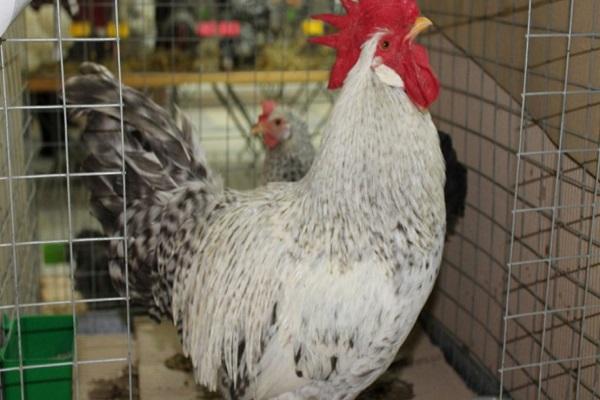
Maternal instinct
The maternal instinct in chickens is quite developed, so chickens can be hatched in households without an incubator. Eggs of other chickens are also laid for hens of this breed. The survival rate of the offspring in Borkovsky barvy is more than 90%.
Advantages and disadvantages
The advantages of chickens of the Borkovskaya barvy breed include their versatility: they use both eggs, which are produced in sufficient quantities, and tender meat. What other advantages do birds of this breed have:
- Calm character and livability.
- Long-term productivity.
- Good cold tolerance and high adaptive characteristics.
- Immunity to typical diseases.
- Developed maternal instinct.
- High survival rate of chicks and adult chickens.
- The ability to distinguish the sex of chickens at day old by color.
- Nice appearance.
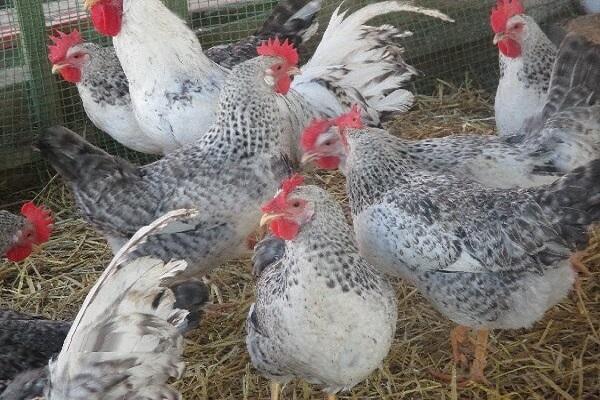
The breed has few shortcomings. The disadvantages include a low indicator of the number of eggs laid per year, but this is only when compared with the most productive breeds. In addition, the eggs are not very large, although this is compensated by a good composition and a high content of easily digestible protein. The disadvantage of chickens is the habit of flying over an open-range fence, the problem is solved by installing a higher fence or mesh as a roof.
Conditions and care of birds
Chickens of the Borkovskaya barvy breed are unpretentious, but like other birds, egg production and health depend on maintenance and care.
For good productivity and strong immunity, birds need a spacious warm home and a place to walk.
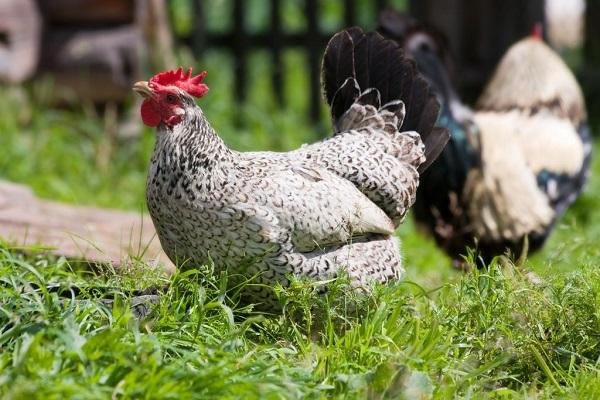
Chicken coop
The chicken coop is equipped at the rate of half a square meter per chicken. The perches are arranged in 4-5 tiers. To prevent productivity from falling in winter, additional lighting is installed and the dwelling is insulated. It is important to protect chickens from drafts while providing adequate ventilation.
Walking yard
The area for walking birds is fenced off with a fence of at least two meters high or covered with a net, since the Borkovsky barvy loves to fly over the fence. In the courtyard, a canopy is provided to protect from the scorching sun and precipitation, drinkers and daytime feeders are arranged.
Feeders and drinkers
Chickens constantly rake food with their feet, so the feeders are made in such a way that only the head can go inside. Drinking bowls must constantly contain a sufficient amount of clean water, especially during the hot season. During the day, water is added or changed as it gets dirty.
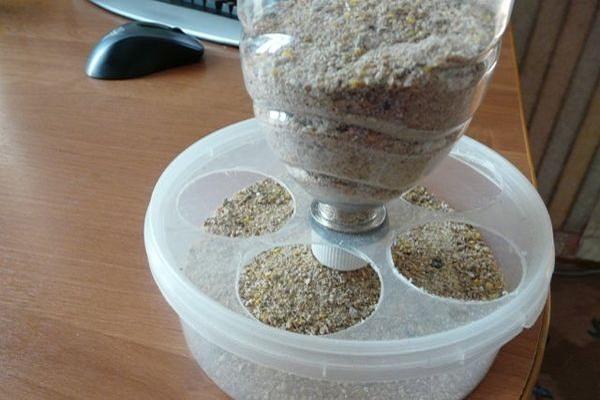
Seasonal molt
Chickens usually begin to molt in the fall and stop laying. Molting lasts about two months. Sometimes molt is forced to reduce its time and improve the health of the poultry house at the same time.
Planned herd replacement
Egg production begins to gradually decline after the Borkovskaya chicken reaches the age of 2 years. For this reason, old hens are gradually being replaced by young ones. It is inappropriate to leave chickens older than 4 years in the herd.
Diet
For the health of birds, it is important that the diet is complete and includes proteins, fats, carbohydrates and trace elements necessary for the body. Depending on the age, sex and functional purpose of the birds, the composition of the feed varies somewhat.
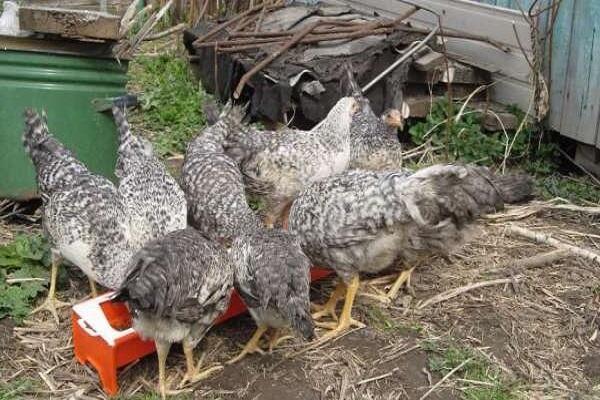
Chicks
Chicken feed should be finely chopped and crumbly so that it is easy for them to peck. For the first week of life, chicks should feed every 3 hours.The diet of babies initially consists of finely chopped boiled eggs, millet and chopped greens, then homemade cottage cheese, mixed feed and vegetables are introduced, from a month and a half, you can give chickens the same feed as adult birds.
Adult herd
Adult birds are fed with a grain mixture that includes wheat, rye, barley, oats, wet feed in the form of homemade mash, and purchased compound feed. Poultry vitamins are obtained from finely chopped greens and pureed vegetables; you can also add purchased vitamin and mineral complexes during feeding.
Layers are fed with calcium in the form of eggshell or shell rock, since the bird's body needs a trace element during the formation of the egg shell.
For digestion, chickens need pebbles, which birds find themselves when free-range in summer. In the winter season, as well as in the presence of a closed range, the birds are given coarse sand or fine gravel.
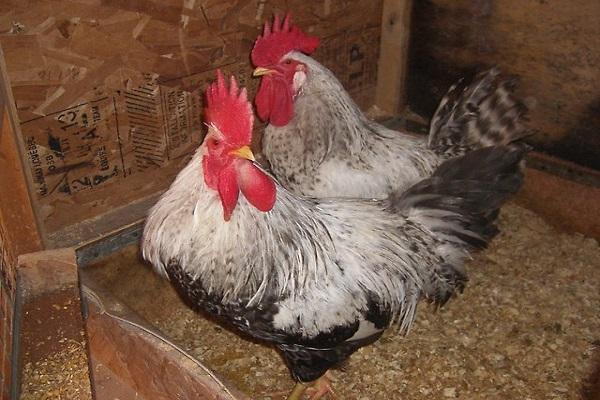
It is necessary to constantly monitor that the chickens have sufficient clean water, for which they check the drinking bowls during the day and, if necessary, fill them.
Breeding the breed
For breeding, choose healthy birds with the characteristic features of the breed. There should be one rooster for 10 layers, so fertilization will be complete. There are no problems with the breeding of chickens, since the Borkovsky barvy hens are excellent hens. The survival rate of offspring hatched by a chicken is higher than that obtained from an incubator, this figure is close to 95%. The hatched chickens, covered with gray down, weigh 45 grams. Daily cockerels are lighter than hens.
Diseases in chickens
Borkovsky barvy chickens are characterized by stable immunity to typical diseases, but the resistance of birds decreases if the content and diet do not meet the requirements. In this case, the hens are weakened. The birds are not insured against vitamin deficiency. It can be eliminated by enriching the diet with herbs, fruits, vegetables, vitamin and mineral supplements.
Chickens of the Borkovskaya Barvy breed will decorate any poultry house, while not causing much trouble. Perfect for updating an existing herd or breeding a new herd. Thanks to their strong immunity, high survival rate and frost resistance, laying hens will take root in almost any region, except for the Far North.
